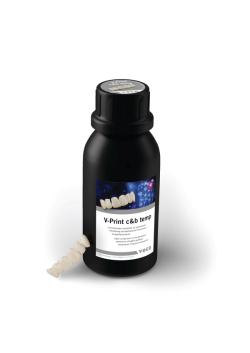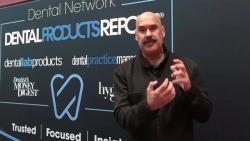- About Us
- Advertise
- Editorial
- Contact Us
- Terms and Conditions
- Privacy Policy
- Do Not Sell My Personal Information
© 2025 MJH Life Sciences™ and Dental Products Report. All rights reserved.
Chairside CAD/CAM Materials: What Are the Pros, Cons, and Indications
What materials you use for restorative work affects your results. We explore the pros and cons of the types of materials available and the indications of today's chairside CAD/CAM materials.
Recent research indicates the material chosen affects the success of the treatment, so a familiarity with the strength and esthetic properties of the various available materials is essential. We explore the pros, cons, and indications of today's chairside CAD/CAM materials.
A Brief History of the Evolution of Chairside Materials
Materials have been changing since CAD/CAM first started producing restorations. For example, in September 1985, Mörmann placed the first chairside ceramic restoration using the CEREC 1 system with CAD/CAM technology at the University of Zurich Dental School. The initial material, Vitablocs Mark I, was a fine particle feldspar-based ceramic. It was replaced in 1987 by Vitablocs Mark II, a high-glass content ceramic, which remained the sole material until 1997. That year, 3M ESPE introduced Paradigm MZ100 blocks (3M ESPE), made of highly filled ultrafine silica ceramic particles in a resin matrix. Then, in 1998, ProCAD evolved into IPS Empress CAD, composed of 40% infiltrated leucite glass, enhancing strength and esthetics. In 2003, 3M ESPE launched Paradigm C, a 30%-by-weight leucite block. Three years later, Ivoclar Vivadent introduced IPS e.max CAD, a lithium disilicate ceramic known for its structural and aesthetic properties. In 2007, Sirona Dental Systems released CEREC Block, similar to Vitablocs Mark II, but with varied shading options.1
So, what does that mean to you today? You have options for your chairside CAD/CAM restorations. Restorative chairside options now include:
- Polymethyl methacrylate (PMMA)-based materials
- Composite resins
- Resin-based ceramics
- Hybrid ceramics
- Silicate ceramics
- Feldspathic ceramics
- Traditional feldspathic ceramics
- Leucite-reinforced glass-ceramics
- Lithium silicate ceramics
- Lithium disilicate ceramics
- Zirconia-reinforced lithium silicate ceramics
- Oxide ceramics
- Zirconium dioxide ceramics
- Polycrystalline ceramics
- Nanoceramics
Following is a summary of the types of materials available today that includes some of their advantages and disadvantages:2
A Breakdown by Class of Chairside CAD/CAM Materials
Feldspathic Ceramics and Leucite-Reinforced Ceramic Blocks are the first generation of chairside CAD/CAM materials used before 1990, such as the Vitablocs Mark II mentioned above and CEREC Blocs. Known for their high translucency and esthetic appeal, this class of materials is popular. However, Feldspathic and leucite-reinforced ceramic blocks also require significant tooth preparation and are weaker than newer materials.
- Lithium Disilicates and Zirconia-Reinforced Lithium Silicates represent advanced glass ceramics with improved resistance qualities. Lithium disilicate, such as IPS e.max CAD, offers high resistance (over 350 MPa) and excellent esthetics. It requires a 2-stage firing cycle to reach full strength (over 440 MPa). Zirconia-reinforced lithium silicate (ZLS) is a newer generation of materials, introduced in 2012, that features smaller crystals and added zirconia for enhanced strength, making it suitable for various restorations.
- Zirconium Oxide (Zirconia) has exceptional strength (500–1200 MPa) and biocompatibility. Zirconia is ideal for crowns, implant abutments, and small bridges due to its minimal plaque retention and low wear on opposing teeth. Despite its advantages, zirconia requires specific processing techniques due to its resistance to conventional acid etching.
- Hybrid Ceramics or Resin Matrix Ceramic Materials combine the esthetics of ceramics with the strength and flexibility of composite resins. These materials include nanoceramic resin blocks, which have a high ceramic filler content (up to 80%), and polymer-infiltrated ceramic network (PICN), which combines ceramic (86%) with composite resin (14%). Hybrid ceramics are easier to mill, require fewer heat cycles, and offer good bending resistance, making it possible to use them at thinner thicknesses.
- Acrylic Resin, specifically polymethyl methacrylate (PMMA), is pre-polymerized without fillers. Some clinicians value it because it produces fewer voids, reduces shrinkage, and shortens chairside time, making it an efficient choice for creating long-term temporary prostheses.2
A Look at Properties
A 2023 review of the evolution of CAD/CAM materials in prosthodontics examined the properties of the different materials in the literature. Their findings are summarized below:
Fracture Toughness of Chairside CAD/CAM Materials: Materials with high Fracture toughness (KIC)are more resistant to fractures and last longer. Researchers found that fired or crystallized glass ceramics have the highest KIC values. Non-fired glass ceramics have much lower KIC. Other researchers noted that thermocycling, or repeated heating and cooling, reduces the fracture toughness of resin-based materials but does not affect leucite and lithium disilicate ceramics.1
Impact of Toothbrushing on Surface Properties
CAD/CAM composite materials are flexible, which helps them absorb stress and resist fractures. These materials are made under high pressure and temperature, making them more uniform and less porous than regular resin composites. This manufacturing process makes them easier to machine and repair. However, abrasive particles in toothpaste can increase surface roughness and reduce gloss, affecting their appearance and longevity. Some composites showed higher wear resistance and gloss and lower roughness after brushing. Rough surfaces can lead to bacterial build-up, which can cause cavities and gum inflammation.1
Edge Strength of CAD/CAM Materials
The edges of dental restorations can wear down and lose support, leading to fractures, sensitivity, plaque build-up, and cavities. Edge force tests measure how stable the edges are. Researchers found significant differences in edge strength between 1-mm and 2-mm thick plates, with failures like cracking and chipping. The researchers noted that LiSi Block had high resistance to chipping due to its fine, dense crystals.1
Polishing Effects and Wear Performance
Smooth and polished surfaces reduce bacterial build-up, prevent chipping and fractures, and improve strength. Researchers found that roughness after polishing was similar, whether done chairside or in a lab. Ceramics wore down less than resin composites but caused more wear to opposing teeth. Polishing increased surface roughness and hardness more than glazing. Manual finishing and polishing with glazing paste were the most effective for reducing roughness and achieving high gloss in glass ceramics.1
Measurement of Elastic Constants
Elastic constants like bulk modulus, Poisson's ratio, shear modulus, and Young's modulus describe how materials respond to stress. These properties depend on the material's structure and composition. Researchers found higher Poisson's ratios for zirconia and glass ceramics, while Enamic had Young's modulus three times higher than Lava Ultimate. Increased load affected stress distribution in crowns made from polymer-matrix composites more than those made from glass ceramics.1
Staining & Aging Dependent Changes in Color
Surface finishing affects texture and roughness, which impacts color stability when exposed to colored drinks and aging. Researchers found that coffee caused the most significant color changes, with these changes increasing over time. There were substantial differences in color stability between resin-based and lithium silicate/disilicate materials. Lithium disilicate or feldspar-based ceramics had the best color stability because of their high density, while polymers were more prone to absorbing pigments from staining solutions.1
Research Indicates Different Materials Succeed in Various Ways
Various dental restorations, including anterior teeth inlays, onlays, veneers, and posterior crowns, require different chairside CAD/CAM materials. Each one in the assortment offers distinct advantages for where clinicians use them in the oral cavity.
For example, feldspathic ceramics are primarily used in the anterior arch because they look good. In contrast, lithium disilicate and zirconia are ideal for the posterior region due to their ability to endure significant occlusal forces.2
With all of these options for chairside CAD/CAM dentistry available, knowing the indications for each class of materials is helpful.
Direct CAD/CAM glass-ceramics include feldspathic and leucite-reinforced ceramics, known for their excellent esthetics. They are ideal for high-impact esthetic restorations such as veneers, crowns, partial crowns, and cavitary restorations.3
Lithium disilicate, zirconium oxide, and lithium silicate-reinforced ceramics offer high optical properties with various shades and translucency levels. They work for monolithic restorations like veneers, inlays, onlays, endocrowns, and crowns for both anterior and posterior teeth. Lithium disilicate is also suitable for small bridges in the anterior region. One can also use them for implant abutments despite limited clinical evidence. Lithium disilicate and zirconia are not ideal for bridge infrastructures but can be esthetic layers over ceramic or metal frames.3
Full zirconia restorations can be milled chairside for crowns or small bridges (up to 3 units). Polished zirconia is less abrasive than other ceramics but has limited esthetics due to low transparency. Its microstructure impacts translucency and mechanical properties, with smaller grains enhancing translucency but reducing resistance to low-temperature degradation.3
PMMA is great for temporary restorations lasting six months to one year. It is easy to mill and suitable for all types of temporary prostheses, including veneers, inlays/onlays, crowns, and bridges.3
Resin composite is easy to mill and offers greater mechanical resistance than standard PMMA. It is suitable for veneers, inlays/onlays, crowns, and bridges and has a flexural strength of 80 MPa.3
Nanoceramics mimic natural tooth characteristics in flexure, compression, and abrasion, making them suitable for single-tooth restorations or small bridges, especially in the posterior area. They are indicated for veneers, inlays/onlays, crowns, and bridges. However, their polymer matrix wears faster than ceramic, making them more abrasive to antagonists.3
Hybrid ceramics, a mixture of resin and ceramic, represent a new category of chairside CAD/CAM materials. These polymer-containing materials result in smoother crowns and less chipping at the margins after milling. The microstructure and crystalline phase of the material significantly influence its clinical performance, mechanical properties, and esthetics.4Additionally, hybrid ceramics provide good flexural resistance and support more conservative treatment approaches.2
PICN works for veneers, inlays/onlays, crowns, and implant prostheses, particularly in the posterior area due to limited gradient shades, with esthetics achieved through make-up.3Nanoceramics offer advantages over conventional blocks, such as superior mechanical properties, better machinability, and smoother milled margins.4
The bad news is that there is no universal chairside material that you can pick up for all restorative cases. Instead, you choose from several available materials, and they all have their advantages and disadvantages. If you like definitive evidence about clinical performance, there is more bad news; all the materials have limited, long-term clinical data, so they need more studies, per multiple researchers.4
The good news is that you have choices that will enhance the restoration and your clinical outcomes—and a lot of information is available to help you choose the right one for the job.
References
- Paulsos, B. et al. (2023) Evolution Of CAD/CAM Materials In Prosthodontics: A Review, IOSRJournals.org. Accessed June 3, 2024. https://www.iosrjournals.org/iosr-jdms/papers/Vol22-issue9/Ser-5/E2209053542.pdf
- Jivanescu, Anca & Ille, Codruta & Rotar, Raul. 2024. Chairside CAD/CAM Restorations. 10.5772/intechopen.114090
- Lambert H, Durand JC, Jacquot B, Fages M. Dental biomaterials for chairside CAD/CAM: State of the art. J Adv Prosthodont. 2017;9(6):486-495.
- Eskandarion S, Neshandar M, Rokhshad R. Classifications and Properties of Materials for Chairside Computer-Aided Design/Computer-Aided Manufacturing Dentistry: A Review. J Res Dent Maxillofac Sci. 2021;6(2):36-50.



